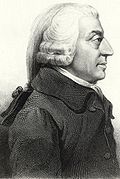ද්වාරය:කලා
Appearance
(P:ARTS වෙතින් යළි-යොමු කරන ලදි)
විකිපීඩියා ද්වාර
සංස්කෘතිය ·
භූගෝල විද්යාව ·
සෞඛ්යය ·
ඉතිහාසය ·
ගණිතය ·
ස්වාභාවික විද්යාව ·
දර්ශනවාදය ·
ආගම් ·
සමාජය ·
තාක්ෂණය
|
කලාව යන්නෙහි, පුළුල් අර්ථය වනුයේ, නිර්මාණශීලීත්වය හෝ පරිකල්පනය ප්රකාශ කිරීමයි. කලාව සඳහා භාවිත වන ඉංග්රීසි ආර්ට් යන පදය බිඳී පැමිණ ඇත්තේ ලතින් පදයක් වන ආර්ස් ඇසුරෙන් වන අතර, එය, ලිහිල්ව පද පෙරැළූ කල, අරුත් දනවනුයේ "පිළිවෙලට තැබීම" යනුවෙනි. මිනිස් මනසෙහි ජනිත වන නිර්මාණ ආවේගය උපයෝගී කොට ගෙන කෘතීන් (හෝ කලා කෘතීන්) බිහි කිරීමේ කාර්යය, කලාව ලෙස සාමාන්යයෙන් විග්රහ කෙරුණ ද එහි සැබෑ අරුත පහසුවෙන් හා සරලව විස්තර කිරීම අපහසු බව දත යුතුය. කලාව බොහෝ විට අත්කම්වලින් හා ප්රතිනිර්මාණාත්මක විනෝද ක්රියාකාරකම්වලින් වෙනස් කොට දැක්වුණ ද මේ සීමාව ඇතැම් විට නිර්වචනය කිරීම දුෂ්කර විය හැකි ය. කිසියම් ශ්රාවක, පාඨක, ප්රේක්ෂක සමූහයකට අර්ථකථනය කිරීම්වස් අමුද්රව්ය සම්පාදනය කිරීම මුඛ්ය අරමුණ කරගත් ශික්ෂණයන් සමුදායක් නිර්මාණාත්මක කලා යන පදයෙන් අදහස් කෙරේ. එනයින් කලාව යන්න තුළට සාහිත්යික රූපාකාර (ගද්ය ලේඛනය හා පද්ය); ප්රසංග පාදක රූපාකාර (නර්තනය, රංගනය, නාට්ය හා සංගීතය); දෘශ්ය හා "සුවිකර කලා" (චිත්ර, මූර්ති, ඡායාරූපකරණය, සන්නිදර්ශන); ආදියෙහි සිට ගෘහනිර්මාණ ශිල්පය හා මෝස්තර නිර්මාණය ආදී ව්යවහාරික භූමිකාවක් සහිත රූපාකාර දක්වා ඇතුළත් වීමට පුළුවන. නිර්මාණශීලීත්වය, සෞන්දර්යවේදය හා භාව උද්දීපනය ඇසුරින් ද කලාව අවබෝධ කරගත හැකි ය.
Funerary art is any work of art forming, or placed in, a repository for the remains of the dead. Tomb is a general term for the repository, while grave goods are objects—other than the primary human remains—which have been placed inside. Such objects may include the personal possessions of the deceased, objects specially created for the burial, or miniature versions of things believed to be needed in an afterlife. Knowledge of many non-literate cultures is drawn largely from these sources. Funerary art can serve many cultural functions. It can play a role in burial rites, serve as an article for use by the dead in the afterlife, and celebrate the life and accomplishments of the dead, whether as part of kinship-centered practices of ancestor veneration or as a publicly directed dynastic display. It can also function as a reminder of the mortality of humankind, as an expression of cultural values and roles, and help to propitiate the spirits of the dead, maintaining their benevolence and preventing their unwelcome intrusion into the affairs of the living. The deposit of objects with an apparent aesthetic intention may go back to the Neanderthals over 50,000 years ago, and is found in almost all subsequent cultures—the Hindu culture, which has little, is a notable exception. Many of the best-known artistic creations of past cultures—from the Egyptian pyramids and the Tutankhamun treasure to the Terracotta Army surrounding the tomb of the Qin Emperor, the Mausoleum of Halicarnassus, the Sutton Hoo ship burial and the Taj Mahal—are tombs or objects found in and around them.
 The glass house at Lal Bagh, a botanical garden in Bangalore, India. The garden was commissioned by the ruler of Mysore, Hyder Ali in 1760, and completed during the reign of his son Tipu Sultan. The glass house was modeled on London's Crystal Palace and constructed at the end of the 19th century.
Charles Holden (1875–1960) was an English architect best known for designing many London Underground stations during the 1920s and 1930s, for Bristol Central Library, the Underground Electric Railways Company of London's headquarters at 55 Broadway and for the University of London's Senate House. He also created many war cemeteries in Belgium and northern France for the Imperial War Graves Commission. Although not without its critics, his architecture is widely appreciated. He was awarded the Royal Institute of British Architects' Royal Gold Medal for architecture in 1936 and was appointed a Royal Designer for Industry in 1943. His station designs for London Underground became the corporation's standard design influencing designs by all architects working for the organisation in the 1930s. Many of his buildings have been granted listed building status, protecting them from unapproved alteration. Modestly believing that architecture was a collaborative effort, he twice declined the offer of a knighthood.
|
|||||||






































